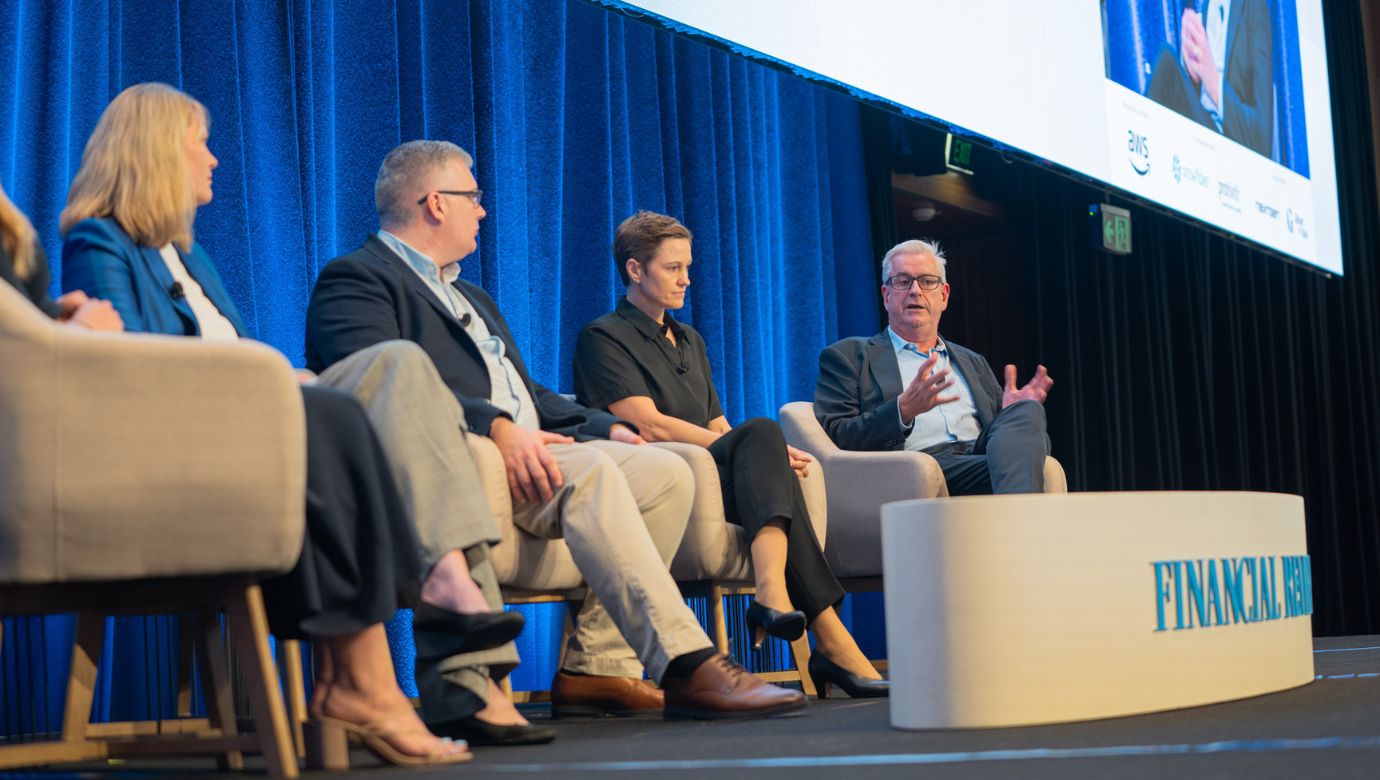Our platform
ApplyOnline®
Our innovative end-to-end lending solution.
Learn more
Solutions
USEFUL LINKS


As a Gold Sponsor of the 2025 Financial Review Banking Summit, held at the Hilton Sydney on Tuesday, March 18, 2025, NextGen was proud to participate in what proved to be a pivotal industry conversation about the challenges and opportunities in banking modernisation. The summit, themed “Banking’s next gen,” explored how a new generation of banking leaders must balance traditional success with their desire to make their mark in a changing landscape where returns in mortgages are under pressure and business banking grows increasingly competitive.
Our Chief Customer Officer, Tony Carn, joined an esteemed panel titled “Future ready? Embracing the core” to discuss how banks are balancing innovation and stability in the high-stakes race to modernise core banking systems. The session explored the billion-dollar gamble financial institutions face as they evolve their core systems to meet new demands and fend off agile competitors.
The panel brought together an array of industry experts including Maile Carnegie (Group Executive Australian Retail at ANZ Bank), Jonathan Allen (Enterprise Strategist at AWS), Philippa Watson (outgoing CEO of Ubank), and our own Tony Carn (Chief Customer Officer at NextGen), with The Australian Financial Review’s Business Reporter Amelia McGuire moderating the discussion.
The session explored the rewards for investors and customers if banks can successfully replace legacy technology stacks with new cloud-based systems, as well as the risks of failing to get this transformation right.
Maile Carnegie set the tone by characterising core banking modernisation as “wickedly difficult,” noting that even with contemporary tools like AI, transformation paths typically take “six to seven years, which tends to be beyond the tenure of most executives.” This reality often leads to decisions being postponed, with leaders “kicking the can down the road.”
Philippa Watson shared Ubank’s approach of acquiring neobank 86 400 to accelerate their technology transformation, emphasising that “once you embark on it, there’s no going back. You can’t stop halfway.”
Jonathan Allen from AWS advocated for a methodical approach: “do everything around that core ledger, and then last, focus in on that [core ledger modernisation], very pragmatically.” He emphasised the importance of “strategic patience but tactical impatience” when executing transformation plans.
Tony Carn provided valuable context about NextGen’s position in the market, noting that as a cloud-based software-as-a-service provider, we “capture around 80 to 85% of all mortgages in the country.” This established our authority in the mortgage technology space before delivering key insights on modernisation approaches.
“I think the key thing, which I see a lot of banks thinking about is, do I buy or do I build? And in some cases, it’s a combination of both,” Tony explained. “What’s really important is to differentiate what banks do well, and in mortgages, for example, that is policy, serviceability, pricing, products, and processes.”
Tony cautioned against pursuing complete revolution when evolutionary approaches could be more effective:
“I do see a lot of players trying to revolutionise, and unfortunately, they often wake up in three years and find they’ve done nothing when they could have been progressively doing quite a bit.”
This perspective aligns with findings from the newly released white paper, “Second generation technology: Banking on the next transformation,” published by AFR Intelligence in partnership with NextGen. The research reveals how advanced technologies married with increased consumer demand are propelling the next generation of digitalisation in Australian retail banks. As highlighted in the paper, this transformation “requires leadership and partnerships that can help banks upskill, inspire their staff and integrate new technologies faster.”
Perhaps Tony’s most compelling contribution came in his passionate advocacy for Open Banking and the Consumer Data Right (CDR) framework, which he described as potentially “a landing on the moon type thing for the banking industry.”
Tony highlighted how Open Banking provides three critical benefits for lenders:
He noted that early adopters in the broker industry are already seeing usage rates climb to 10% within just one month of implementation, and predicted that 2025 would see real-life use cases of Open Banking for income verification, which he called “a real game changer.”
This perspective on data-driven lending is echoed in our report, which cites Beyond Bank Australia’s Chief Customer Officer Nick May explaining how their implementation of NextGen’s technology has “enabled Beyond Bank to reduce its loan approvals time—or ‘time-to-yes’—to between 24 to 48 hours, while also saving an estimated 300,000 pieces of paper annually.” The report highlights how technologies like AI are “extending the digital transformation of banking to the front, middle and back offices,” while “promising to grow efficiencies and improve customer experiences.”
In the context of this year’s Banking Summit theme, which challenged leaders to deliver growth as returns in mortgages face increasing pressure, these efficiency and experience improvements become even more critical for Australian lending institutions seeking to maintain competitiveness.
The panel also addressed important developments in security, with Phillippa Watson sharing Ubank’s pioneering move to passkeys technology, eliminating passwords entirely. With 90% of Ubank’s logins now using this technology, it demonstrates how security innovations can achieve rapid customer adoption when implemented well.
Maile Carnegie highlighted ANZ Plus’s progress, with over a million customers and $20 billion in funds under management, demonstrating that major transformation projects can succeed despite their challenges.
AWS’s Jonathan Allen noted that Australia “consistently punches above its weight” in banking technology adoption, evidenced by AWS’s decision to place two cloud regions in Australia – a distinction shared by only three other countries globally.
The discussion reinforced NextGen’s vision that the future of lending lies in leveraging validated data rather than documents and claims. As Tony stated:
“Having that validity of the data and having a value chain between an accredited data recipient and the lender is an unbreakable chain. It’s tamper-proof. It’s very, very safe.”
This vision of data-driven lending is central to the findings in the industry report. The research examines how advanced technologies like AI and quantum computing are fundamentally transforming Australian lending institutions. According to the research conducted with leaders from Commonwealth Bank, Westpac Group, and Beyond Bank Australia, this transformation is empowering “new services like online mortgage applications, digital document and ID verification, and reduced loan processing times.”
As the Banking Summit theme highlighted, with returns in traditional mortgage lending facing pressure, these innovations become crucial for institutions looking to differentiate and grow in a challenging market.
As a proud Gold Sponsor of the 2025 Financial Review Banking Summit, NextGen remains committed to advancing the conversation around financial technology innovation and providing the solutions that will power the next generation of lending in Australia. Contact our team to explore how NextGen can support your technology modernisation journey.